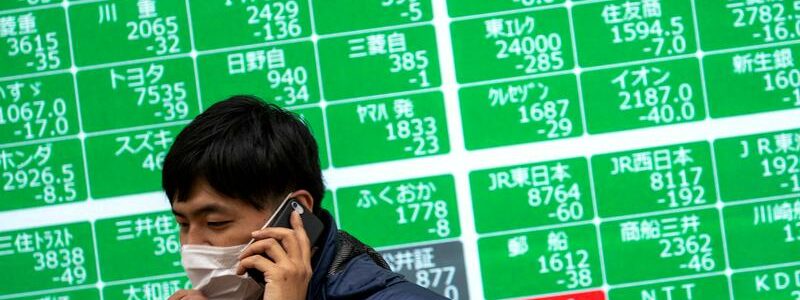
Asia shares step back, Nikkei hesitates near 30-year high
SYDNEY (Reuters) – Asian shares made a sluggish start on Monday to a week packed with major U.S. and Chinese economic data and the launch of Apple’s latest iPhones, while the Nikkei was tantalisingly near heights last visited in 1990.
Japanese shares have been on a tear as hopes for fresh stimulus from a new Prime Minister saw the Nikkei surge 4.3% last week. The Topix has already scaled that peak, but the Nikkei dipped 0.3% ahead of the resistance barrier.
Reports U.S. Democrats were considering proposals to raise taxes on corporations and the wealthy, while not exactly new, could make for a cautious mood.
Adding to concerns about Beijing’s regulatory crackdown was an FT report it aimed to break up Alipay, the hugely popular payments app owned by Jack Ma’s Ant Group.
China releases a swath of data on retail sales, industrial output and urban investment on Wednesday that analysts fear will show a further slowdown in the world’s second biggest economy.
MSCI’s broadest index of Asia-Pacific shares outside Japan eased 0.7%, after bouncing on Friday. Chinese blue chips were off 0.3%.
Both Nasdaq futures and S&P 500 futures were up 0.1%, after running into profit taking last week.
Wall Street suffered its worst run since February as doubts about the resilience of the global economic recovery hurt former reopening darlings in energy, hotels and travel.
Apple will be a focus after sliding on Friday following an unfavourable court ruling related to its app store, just days before it unveils the new iPhone line up.
Also highlighting are readings on U.S. consumer prices on Tuesday, which is expected to see core inflation ease a touch to 4.2%, while retail sales on Thursday could show another decline as the spread of the Delta variant spooks shoppers.
The importance of the CPI was underlined by Philadelphia Fed President Patrick Harker who told the Nikkei he wanted to start tapering this year just in case the spike in inflation proved more than transitory.
Harker favoured scaling the tapering down over an 8 to 12 month period, which is longer than some hawks have touted.
“Global markets are fixated on the timing of tapering of QE by central banks, particularly the Fed,” said analysts at ANZ in a note.
“That’s unsurprising, given the support that the extra liquidity has provided to equities and assets more generally,” they added. “The latest guidance from senior FOMC officials is that tapering is still very much on the agenda this year, but is unlikely to be announced until November.”
The tension is only set to mount ahead of the Fed’s next meeting on Sept. 21-22, and played a part in nudging U.S. 10-year yields up toward a major chart bulwark around 1.38% last week.
The drift higher in yields and the general air of risk aversion helped the dollar recoup some losses last week and left its index at 92.624, off the recent low of 91.941.
The euro has faded back to $1.1806, from the September top of $1.1908, and risks breaking support under $1.1800. The dollar remains sidelined on the yen at 109.93, having spent an entire month trapped in a tiny range of 109.40-100.46.
Gold has also had trouble breaking higher and was last flat at $1,788 an ounce, after shedding 2.1% last week when it repeatedly failed to clear resistance above $1,1830.
Oil prices firmed on Monday supported by growing signs of supply tightness in the United States as a result of Hurricane Ida. About three-quarters of the U.S. Gulf’s offshore oil production has remained halted since late August. [O/R]
Brent added 40 cents to $73.32 a barrel, while U.S. crude rose 39 cents to $70.11.
Source: Read Full Article